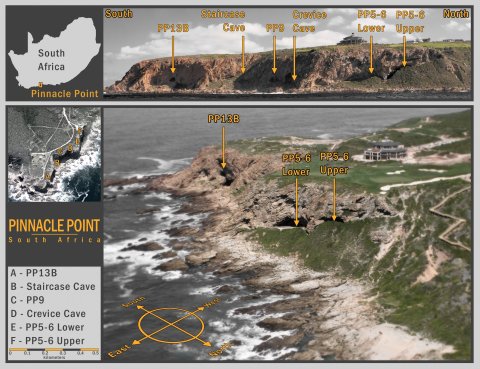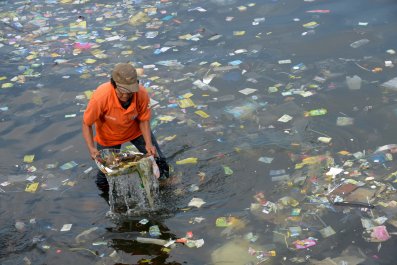Updated | Once every couple dozen millennia, Earth undergoes a cataclysm, the eruption of one of a handful of the so-called supervolcanoes on its surface. They have a nasty habit of throwing the planet into a global winter. We haven't seen one in the past 20 or 30 thousand years, so while scientists can measure impacts like quarter-mile-thick layers of ash, it's harder to understand how humans would have fared during these blasts and their aftermath.
But according to a new paper published in the journal Nature, at least some groups of early humans did just fine in the wake of one gigantic eruption, which took place about 74,000 years ago at the Toba supervolcano in Indonesia.
The study was based on archaelogical evidence gathered at two sites in South Africa, about 5,500 miles away from the supereruption. This was just before humans began to leave Africa, and scientists had long wondered how bad the Toba eruption had been for early humans.
What allowed the new study to start answering that question was one microscopically tiny piece of volcanic glass, flung out by the cataclysmic eruption and carried by the winds to South Africa, where it caught the eye of co-author Panagiotis Karkanas, an archaeologist at the American School of Classical Studies in Greece.
"It was one shard particle out of millions of other mineral particles that I was investigating," Karkanas said in a press release. "But it was there, and it couldn't be anything else."
And because the scientists were armed with incredibly precise measuring tools to track successive layers of artifacts, they could confirm that humans lived at the site, called Pinnacle Point, before, during, and after the supervolcano eruption.

"During and after the time of the Toba eruption people lived at the site continuously, and there was no evidence that it impacted their daily lives," co-author Erich Fisher, who studies early humans at Arizona State University, said in a press release.
To the team behind the new paper, that suggests that the area around Pinnacle Point was somehow buffered from the food shortages they would have expected to see from the cold, dark conditions after a supereruption. Given the site's coastal location, they think the secret may have been plentiful seafood.
The photo caption for this article has been updated to include the correct timeline for the Toba eruption.














